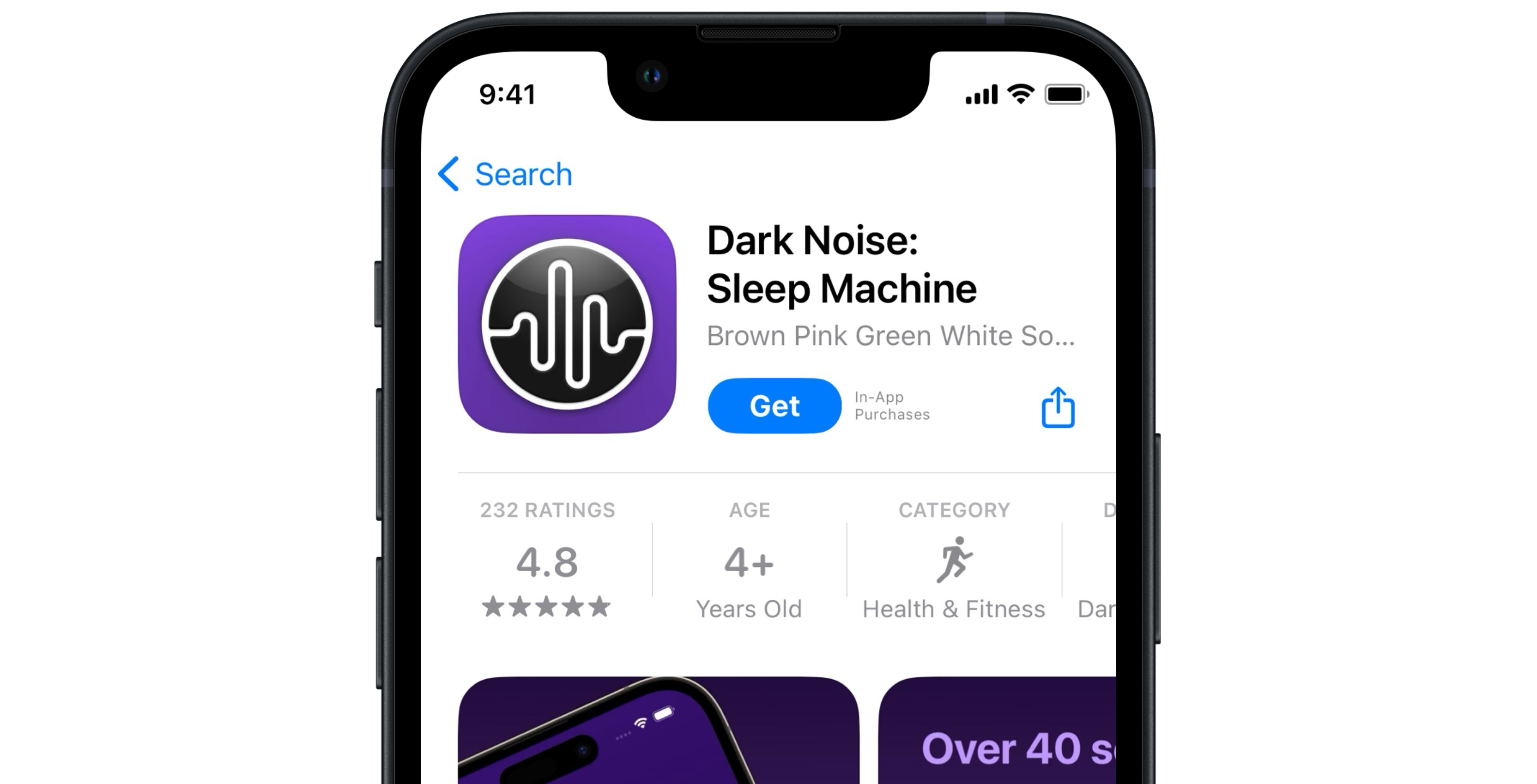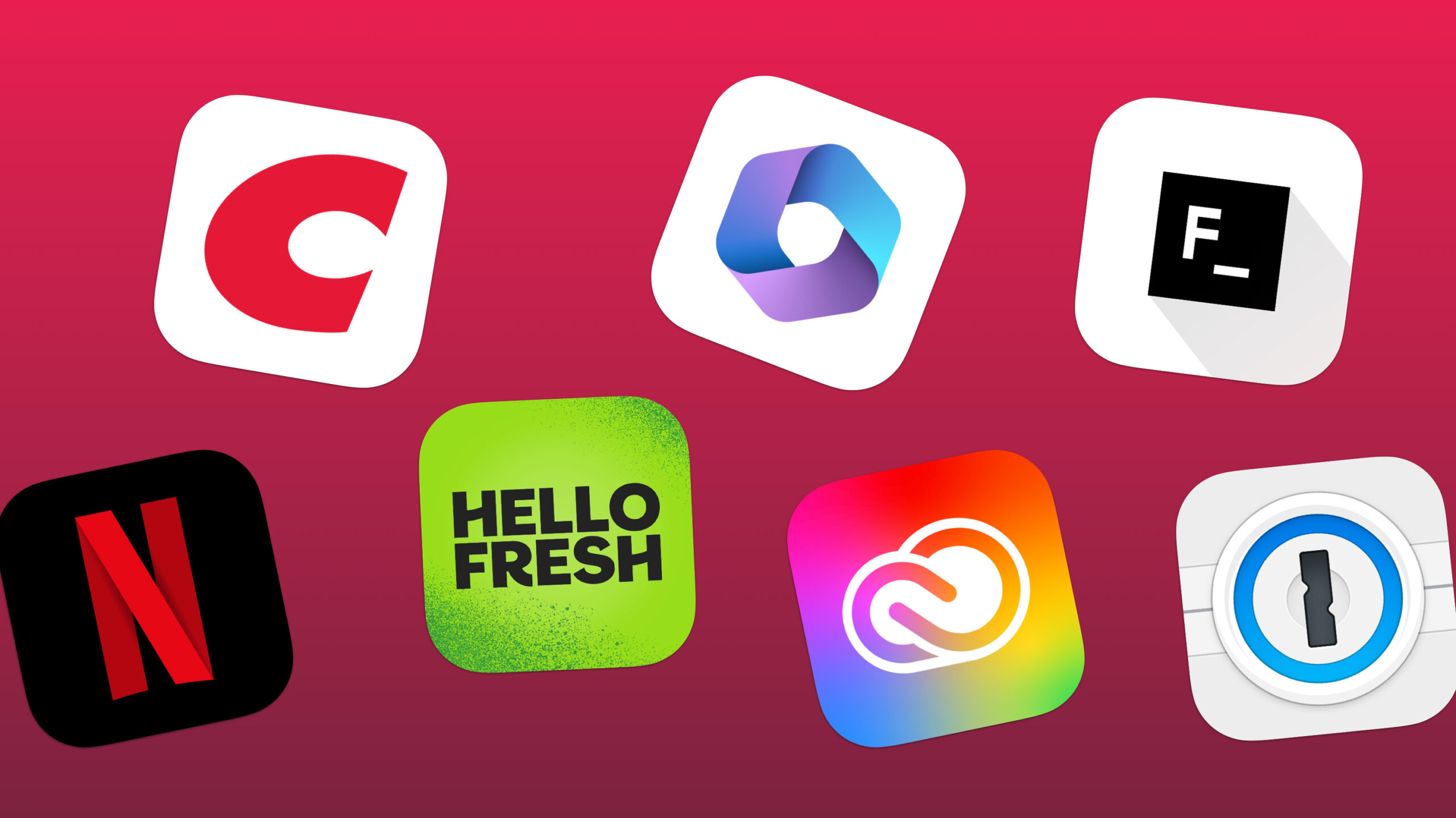
What’s the worst possible thing in technology you can think of? The lack of colours in Apple’s professional lineup? The single USB-C port on the now discontinued 12-inch MacBook? Oh, how about how Apple’s Magic Mouse has to charge like a turtle flipped on its back? The answer is obviously none of the above because you read the title, and you know I’m going to say subscriptions [insert dramatic music here].
Subscriptions are a necessary evil. Similar to ads, but that’s another argument. Should everything be a subscription? No — absolutely not. Regardless, there are some compelling reasons why subscriptions do make financial and logical sense for both the app’s developer and user. After all, if your favourite app stopped working tomorrow, would you not at least consider providing the developer with a small amount of money every month (or year) to ensure they’d continue to support the app vital to your workflow?
I don’t believe everyone should subscribe to everything. Nor can or should they. Regardless, I do think that there are some compelling reasons why subscriptions are here to stay and how they can make the app economy better.
Two types of subscriptions
It’s important to understand that there are two types of subscriptions for the context of this piece: digital services and physical goods.
Digital services are subscriptions to non-tangible goods — typically software, streaming services, or memberships — such as Adobe Creative Cloud, Microsoft Office, Netflix, Apple One, Amazon Prime, or Costco Gold Star. Even our cellphone and internet services are subscriptions.
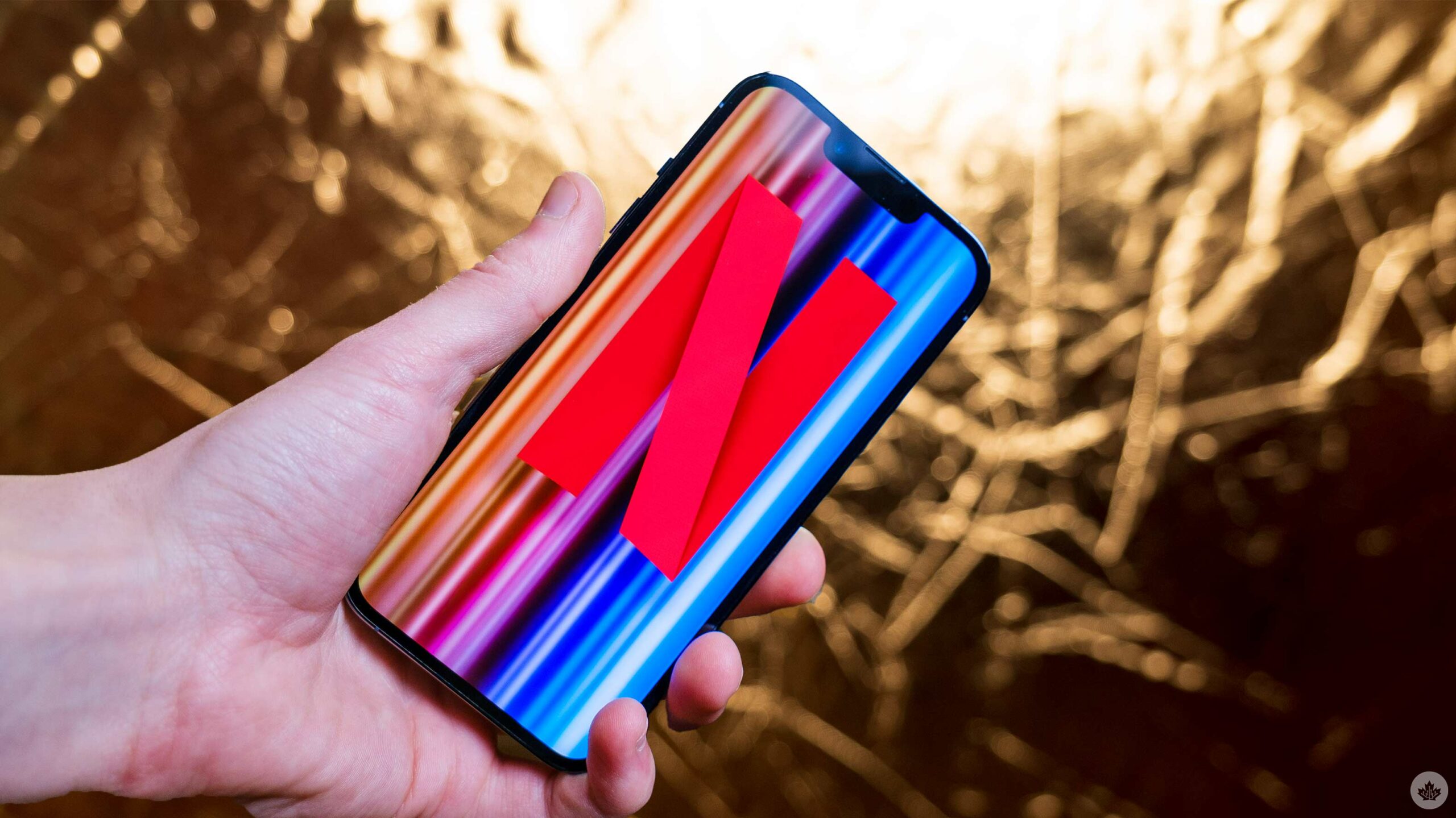 Physical goods are the subscriptions that provide you items you can touch or consume on a reoccurring basis, including Hello Fresh, Dollar Shave Club, and any of the other countless subscription boxes being advertised to you.
Physical goods are the subscriptions that provide you items you can touch or consume on a reoccurring basis, including Hello Fresh, Dollar Shave Club, and any of the other countless subscription boxes being advertised to you.
I’m attempting to divide subscriptions into these two categories because the logic I use in favour of subscriptions in the next section is specifically for digital services. Physical goods, as I’ll explain in another section, are the real bane of our existence.
The natural move to subscriptions
The days of $0.99 app purchases are pretty much over. It’s challenging to find an app listed at $0.99 on the App Store or Play Store today. Regardless, one-time app purchases were never sustainable. Even in their heyday, one-time purchased apps were listed artificially low. Subscriptions should have always been the business models for software.
Adobe arguably pioneered subscriptions in 2013 with its rollout of Adobe Creative Cloud. 1Password decided in 2021 that version 8 would be subscription-only, dropping support for one-time purchases. Even Dark Noise, a small indie-developed app, switched from a one-time purchase to a subscription earlier this year.
It can be pretty easily argued that big companies like Adobe and Microsoft were doing fine before they introduced subscriptions. Switching to a subscription model was just a drive for more revenue. But I would wager that most of these companies’ customers were businesses. Yes, Adobe and Microsoft did sell to individual consumers, but how many people were really shelling out a few hundred dollars for Photoshop or Word unless they needed it for business or school?
It’s harder to know what the financial picture looked like for a private consumer-focused company like 1Password. 1Password does sell business subscriptions, but its primary customer base is still regular consumers. When you account for the small indie developers like Charlie Chapman of the white noise app Dark Noise or Marco Arment of the podcast player Overcast, subscriptions are the sustainable way forward.
From a certain point of view, subscriptions have always been a thing. When you bought Microsoft Office 2011 for Mac as a one-time purchase, eventually, you had to buy a new copy because Apple dropped support for 32-bit apps in 2018 with macOS High Sierra. Seven years is a long time to get out of a one-time purchase. Still, I can say people were not happy having to buy another copy of Microsoft Office despite Microsoft changing nothing. Affinity, the popular alternative to Adobe Creative Cloud, is a one-time purchase. Still, when they released version two in 2022, I spent around $200 to upgrade.
“At the end of the day, subscriptions encourage developers to stay engaged with their apps.”
I’m not arguing that Netflix, Adobe Creative Cloud, or any other subscription is fairly priced. Frankly, there are many one-time purchase apps that I don’t think are well-priced either. Value for money will always be a hotly debated topic based on a person’s own unique situation. Massive companies like Microsoft and Adobe probably never needed to switch to subscriptions, but they did. Meanwhile, Final Cut Pro for macOS or Affinity’s software suite — while one-time purchases — are at price points, making them inaccessible to people who may only need the software for a short duration and are on a limited budget.
Even for the subscription-based apps that still offer a one-time “lifetime” purchase, it’s likely three to four years’ worth of an annual subscription. Will you use the service for that long? Lifetime subscriptions do not guarantee the company will be around for your entire lifetime to use it. Apollo for Reddit was forced to shut down, and whether jokingly or not, there were Reddit posts inquiring about a refund after buying a “lifetime” subscription.
Subscriptions provide stability
Eliminating risk is one of the best things a business can do for itself. With one-time purchase apps, much of the revenue comes immediately following its initial launch. After that, sales typically fall to a trickle. This results in developers getting a sizeable payout early on, but in the long term, it can be hard to invest in an app’s ongoing development.
Lots of things should be one-time purchases, like furniture and non-consumables. However, software isn’t a physical good that stays the same over time. Developers are constantly pressured to add new features and keep the app supported for the latest operating system version.
At the end of the day, subscriptions encourage developers to stay engaged with their apps. Consistent income unlocks many opportunities for developers to maintain and improve their apps.
Here are five ways subscriptions unlock stability for developers and continuous value for users:
1. Compatibility: Imagine buying some lamps to put inside your house, and then every year, your outlets change slightly, requiring a retrofit to your lamps for them to continue to work. Would you expect the lamp manufacturer to provide the retrofit at no charge? The house is what changed, not the lamp. This is essentially the playing field on which app developers operate. Apple updates its operating systems every year and, in turn, expects developers to update their apps to ensure compatibility. This expectation to ensure compatibility is fine when it’s your entire business. But suppose it’s an app you made five years ago and have barely touched since or a side project you created to solve a need you once had. In that case, it can be challenging to justify dedicating the time to updating it without generating any current revenue.
2. Continuous Feature Rollout: Before subscriptions, developers would hoard newly developed features for a major release. That major release would come over a year or more after the previous version’s release, and users would be charged an upgrade fee. This system resulted in significant features being released occasionally and in large chunks. With a subscription model, developers are incentivized to keep users happy and subscribed with the continuous and ongoing release of new features.
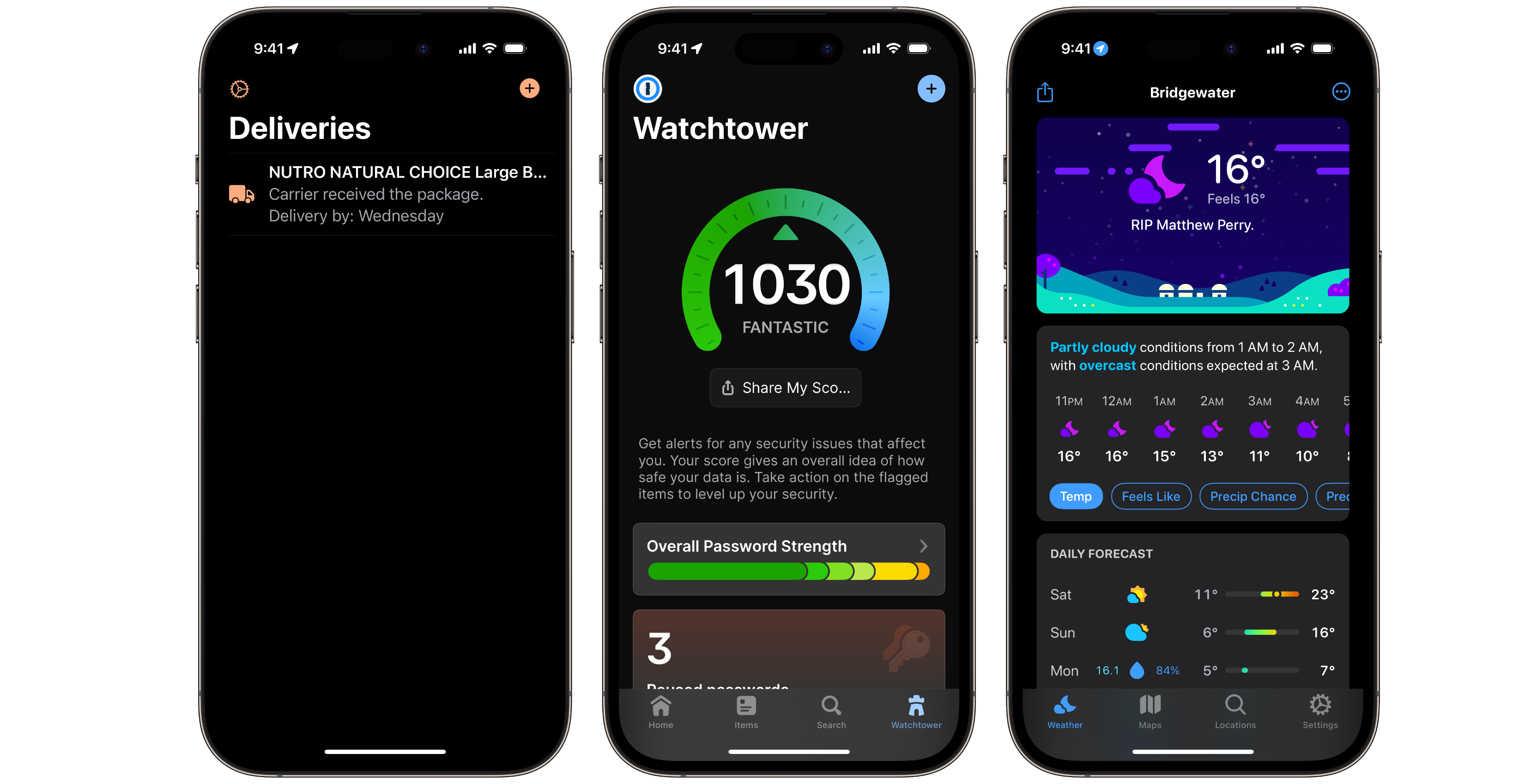
3. Feedback Implementation: Similar to continuously rolling out new features, subscriptions encourage developers to be active listeners to their subscribers. Have a feature you’d really like? Notice a feature a competitor has? With a one-time purchase, the app has been sold, and the money given. With a subscription, the developer is incentivized to integrate requests and features that keep you subscribed to the app, thus creating a better product!
4. Ongoing Costs: Some of the best features of an app sometimes require servers or other ongoing costs put on the developer. It’s challenging for developers to offer features with an ongoing cost associated with them without charging a subscription. For example, many people don’t realize that weather apps must pay for the data they source. Many free weather apps cover this cost through ads or by selling your valuable location data. Instead, I’m happy to pay Carrot Weather less than $30 a year for a hilarious, feature-rich app that respects my privacy.
5. More Flexible: I mentioned earlier how the popular white noise app, Dark Noise, switched from a paid upfront model to a subscription model. Well, in doing so, the developer actually made the majority of the app free with the added benefit of having more opportunities to develop and implement new features, including those with ongoing server costs. Subscriptions allow developers to offer free trials or entirely free versions of their apps, which makes it easier for users to try them without taking the risk of buying an app upfront and disliking it. For users who either can’t afford a large upfront price (like the $399 for Final Cut Pro for macOS) or who just need a service for a short period, subscriptions become a more obtainable and accommodating option. For example, I subscribe to an app called Descript two to three times a year when I need the service rather than a year upfront, saving me one to two hundred dollars.
Physical goods made us hate subscriptions
It’s not a stretch to say that people feel they have subscription fatigue. While I couldn’t find an exact statistic, it’s safe to say that, broadly, people do not like subscriptions. After all, every company is after that sweet, sweet, reoccurring revenue. In my opinion, subscriptions for digital services make logical sense, as I argued above. The price being charged can always be debated. I’m not arguing the cost of Netflix or Adobe Creative Cloud is fair — but the business model does have merits.
 What’s exhausting is the seemingly never-ending number of companies who want to ship me something every month. I don’t see why I need a new pair of socks, underwear, or dog toys every month. I also have difficulty seeing the value in PC Optimum Insider, Uber One, or Cine Club. If you do, fantastic! But it’s exhausting that everyone wants $10 a month from me because I occasionally use their service.
What’s exhausting is the seemingly never-ending number of companies who want to ship me something every month. I don’t see why I need a new pair of socks, underwear, or dog toys every month. I also have difficulty seeing the value in PC Optimum Insider, Uber One, or Cine Club. If you do, fantastic! But it’s exhausting that everyone wants $10 a month from me because I occasionally use their service.
Amazon’s ‘Subscribe & Save’ is an excellent example of how giving a small discount becomes worthwhile for the company. Companies and their shareholders love reoccurring revenue because of its predictability. Customers are also unlikely to unsubscribe once they sign up for a service, even if they no longer use it. Due to this stickiness, consumers continue to use the same brand for a long time.
Apple’s services transformation
It’s hard to discuss how subscriptions impact the tech landscape without addressing Apple’s transformation into a services company. Much of Apple’s success comes from being the company that makes its own hardware and software. Creating both allowed for efficiencies, performance and design unmatched by anyone else in the industry.
Apple has been trying to brand itself as the trifecta of hardware, software, and services since at least 2011. Services began as something near non-existent on Apple’s balance sheet, consisting of AppleCare+, iTunes, and App Store revenues. Services now account for around one-quarter of the company’s quarterly revenues including subscriptions like Apple TV+, News+, Fitness+ Arcade, Music, and Card, along with iCloud, AppleCare+, and the company’s 15-30 percent cut of all App Store sales.
November last year, I wrote a piece titled ‘Apple’s Pursuit of App Store Ad Revenue is Frustrating.‘ We recently learned that Google cuts Apple a cheque of nearly $20 billion USD (about $27 billion CAD) yearly to make it the default search engine on iOS. Spotify has jabbed at Apple enough times over having a monopoly on the App Store that Apple penned a formal response in 2019.
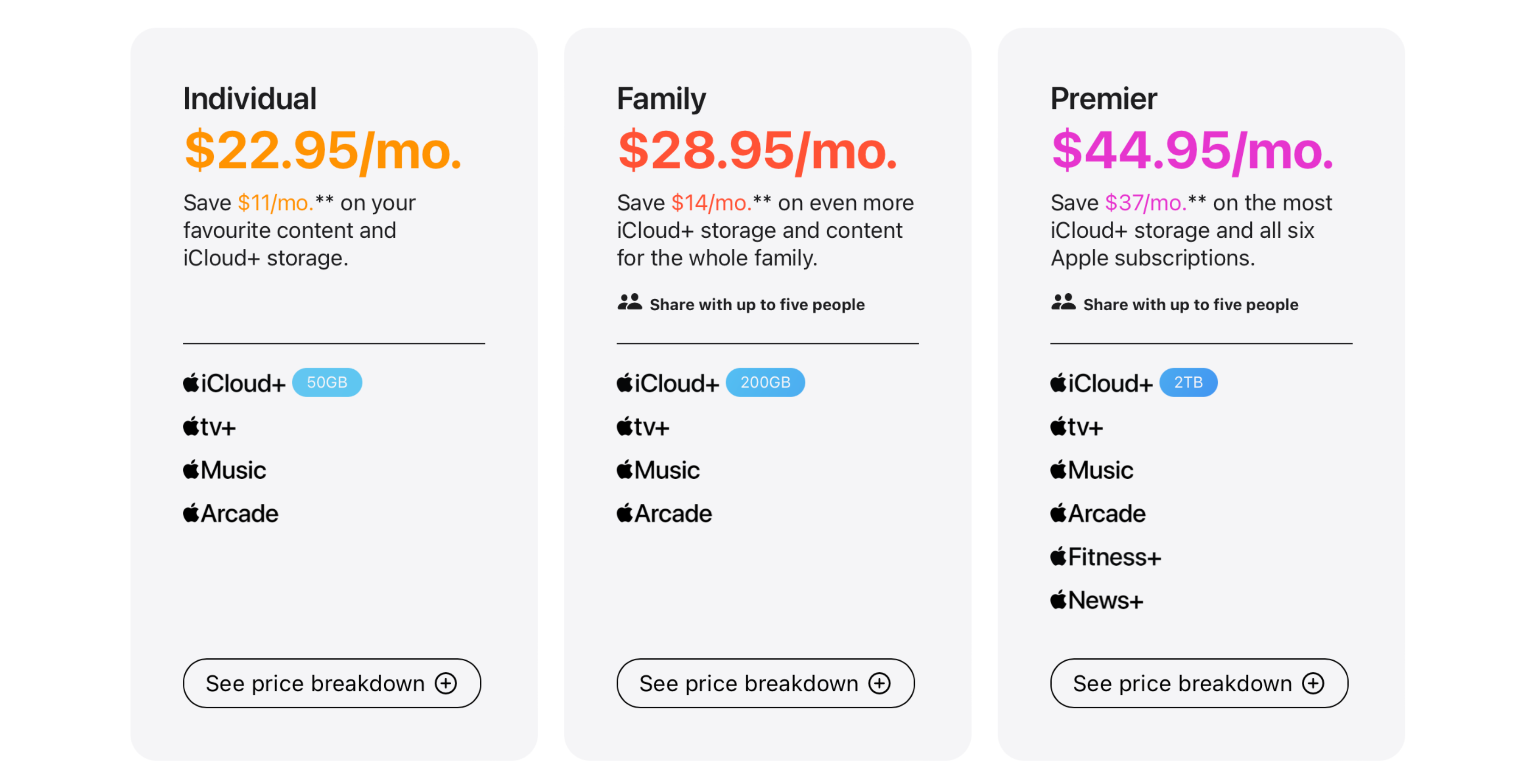 Look, I’m pretty open and honest about being an Apple fan. I widely consider it a part of my identity (judge me all you want). Overall, I don’t have an issue with Apple continuing to create subscriptions, especially when the content is as great as it is on Apple TV+ and Fitness+. My frustration comes when Apple fails to address the fact that they sell me a thousand-plus dollar iPhone along with a Mac, iPad, Apple Watch and AirPods, all with AppleCare+, and then have me subscribe to an Apple One bundle, and still want to serve me ads in the App Store, and on Apple Maps, Books, and Podcasts.
Look, I’m pretty open and honest about being an Apple fan. I widely consider it a part of my identity (judge me all you want). Overall, I don’t have an issue with Apple continuing to create subscriptions, especially when the content is as great as it is on Apple TV+ and Fitness+. My frustration comes when Apple fails to address the fact that they sell me a thousand-plus dollar iPhone along with a Mac, iPad, Apple Watch and AirPods, all with AppleCare+, and then have me subscribe to an Apple One bundle, and still want to serve me ads in the App Store, and on Apple Maps, Books, and Podcasts.
My advice to Tim Cook and everyone else at Apple is to cut the advertising initiatives. I said it a year ago, and I’ll repeat it: it does more long-term harm to Apple’s brand than the revenue generated in the short-term. I also think a simple solution to complaints like those from Spotify and Netflix is to drop the 15-30 percent cut of revenue from the App Store for services Apple competes against, like music, fitness, and video streaming.
Finally — and arguably most importantly — treat developers better. Developers need to be viewed less as revenue cash cows and more as what helps make Apple’s platforms so incredible to use every day.
Final Thoughts
Look, I don’t love subscription services. People can only spend so much on non-essential goods and services. At the end of the day, we need to be more selective of what we subscribe to or purchase. I don’t think twice about subscribing to Parcel, 1Password, or Carrot Weather — all apps I love. But I was also really frustrated when Apple increased Apple One pricing in October.
I bought Affinity Photo, Designer, and Publisher instead of subscribing to Adobe Creative Cloud. The one-time purchase made more sense for the semi-occasional times I needed those apps. If every utility I installed on my Mac was a subscription, no, I wouldn’t have installed them all. It just wouldn’t be practical.
Free and low-cost apps continue to play an essential role in improving our computing experience. However, when building a long-term business, outside of passion projects or side income, subscriptions are the best way to support the incredible developers who work hard to create beautiful and powerful apps.
MobileSyrup may earn a commission from purchases made via our links, which helps fund the journalism we provide free on our website. These links do not influence our editorial content. Support us here.


